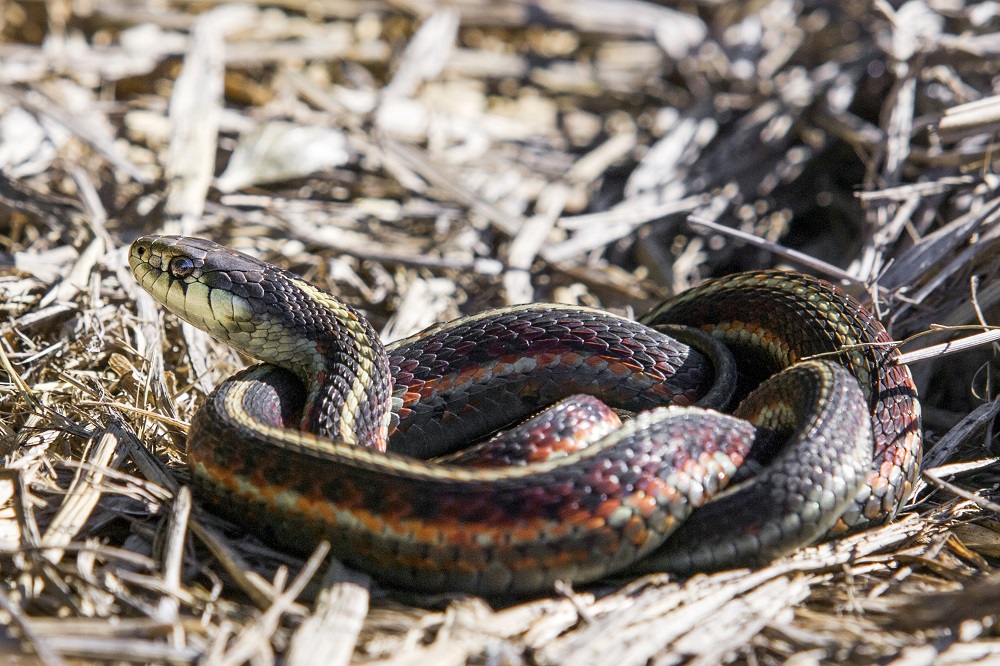These regions are considered America’s most venomous states because of the animals living there. If you live in one of these states, too, be cautious!
Tell me, what comes to your mind when I say the word venomous creatures? Most likely, you think of snakes. And I completely understand you because snakes are dreadfully known for being among the most terrifying reptiles on the planet. Whether you’re hiking, biking, or otherwise spending time in nature, there are many different kinds of snakes to stay away from.
In previous articles, some colleagues of mine wrote about the most venomous spiders in the U.S., I also wrote something about dangerous insects and I think there were also briefly mentioned a couple of frog species that are also poisonous. But this is just a small bit of what the wildlife of our country has to offer.
All of the most venomous animals in the United States, from the deadliest sea creatures to the most poisonous snakes in the woods, have powerful poisons that can cause severe pain, paralysis, and, in extreme circumstances, even death. If you love the outdoors, you should know who these predators are, even though they don’t often attack people unless provoked.
Except for Alaska, venomous snakes can be encountered anywhere in the United States. In the following lines, I will discuss the most venomous states in the U.S. and a bit about some dangerous animals that we can find in each of them.

California
People frequently picture California’s charming small towns, which are ideal for retirement because they provide such a high standard of living. Yep, California is a little bit pricier than other states in the U.S., but it’s still a great place to live if you’re ok with crowds. But I am not here to lecture anybody, so let’s get back to our dangerous animals.
Although California is lovely, this state is one of the most venomous states in the country. Home to a different kind of snakes (33 to be more specific), especially rattlesnakes, toads, Sonoran Desert toads, and African clawed frogs, California is in the top dangerous spots. According to statistics, in the famous Golden State, an estimated 221 people are bitten by snakes annually.
The Western black widow, brown widow, yellow sac, desert recluse, and Chilean recluse spiders are the five most dangerous spiders in California. And I nearly forgot to mention the adorable little California newt, which is a dangerous animal that should be avoided despite its pleasing look.
Florida
Oh, the Sunshine State, with a vast population of seniors and hundreds of tourists every month, is considered one of America’s most venomous states. Some species of box jellyfish, which are not native to Florida, can be fatal if they sting you.
Reactions to jellyfish stings range from minor irritation to terrible pain. A jellyfish sting can cause swelling or, in more severe cases, heart failure; if treatment is not received, the result can be fatal. Among the dangerous animals that call Florida’s waters home, there is also lionfish. Invasive species like lionfish may harm native species and their habitat.
To minimize the adverse effects on native marine life and ecosystems, the Florida Fish and Wildlife Conservation Commission (FWC) encourages people to remove lionfish from Florida waters.
Texas
Whether you live in Texas full-time or are just visiting for a weekend, it is certainly essential to be aware of the snake population. This is because, as of right now, fifteen potentially harmful snake species coexist in the state of Texas. Five of those fifteen are particularly venomous. The cottonmouth, timber rattlesnake, copperhead, Texas coral snake, and Texas diamondback rattlesnake are the poisonous ones.
Texas is home to roughly 105 different species of snakes. The good news is that these snakes typically eat rodents, small birds, slugs, snakes, and other smaller snakes. And the chances of being attacked or bitten by one of these snakes are very low; if they feel threatened, they might do it.
Mississippi
Did you think that California had many dangerous animals on its grounds? How much do you know about the wildlife in Mississippi? Among the negative aspects of living in a state like Mississippi, venomous snakes are undoubtedly a top worry for residents. Currently, Mississippi is home to more than 50 snake species: Eastern diamondback rattlesnakes, pygmy rattlesnakes, timber rattlesnakes, cottonmouth snakes, Southern copperheads, and Eastern coral snakes.
However, snake bites are not very common in Mississippi. 135 cases of venomous snake bites were reported in 2019. Mississippi is home to the pickerel frog, the only poisonous frog aside from snake sightings in the Hospitality State. In Mississippi, two extremely venomous spiders are the brown recluse and the black widow.

Arizona
Arizona is known for having the worst reputation in America for venomous snakes. The Copper State is home to 40 different snake species, and a staggering proportion of them are poisonous. The Great Basin rattlesnake, Hopi rattlesnake, sidewinder rattlesnake, Arizona black rattlesnake, Mexican vine snake, lyre snake, and Arizona coral snake are all venomous and call the state of Arizona home.
Additionally, the Mojave, tiger, ridge-nosed, Northern blacktail, speckled, prairie, Western diamondback, twin-spotted, and Grand Canyon rattlesnakes are among the various species. In Arizona, between 250 and 350 snake bites are reported annually, with 200 of them typically coming from ferocious rattlesnakes.
The only dangerous frog in Arizona is the Sonoran Desert toad, sometimes referred to as the Colorado River toad. It is also home to the Arizona brown spider, black widow, and brown recluse spider.
Oklahoma
Oklahoma is another one of the American states that have a ton of dangerous animals as inhabitants. Although tornadoes are a major problem in Oklahoma, locals must also be mindful of other dangers. Oklahoma is also home to a sizable snake population.
Seven of the forty-six snake species are potentially poisonous. The well-known snakes that can bite with venom include cottonmouths, copperheads, Western diamondback rattlesnakes, timber rattlesnakes, Western pygmy rattlesnakes, Western massasaugas, and prairie rattlesnakes.
In terms of the number of snake bites per person, Oklahoma ranks fourth in the US. We don’t think those odds are very good. Unfortunately for residents of Oklahoma, the state has twice as many snakebite cases as almost every other state in the union.
Oklahoma has to struggle with pickerel frogs, just like Mississippi. There are also brown recluse spiders and black widows that can spew venom. Furthermore, if you’re around visiting Oklahoma, you may also pay attention to mosquitoes, fire ants, or kissing bugs.
Alabama
In Alabama, 208 snake bites happened in a single year. Alabama is home to 66 snake species, six of which are poisonous. The coral snake, copperhead, cottonmouth, pygmy, timber, and eastern diamondback rattlesnakes are all venomous, meaning they have the potential to harm people.
An estimated 208 venomous snake bites occurred in Alabama in 2024. 6.37 out of every 100,000 residents experienced that terrifying situation. That’s why all the residents of Alabama are urged to routinely pick up any trash near their homes to make it harder for poisonous snakes to hide.
Are you curious to read further about dangerous animals from all over North America and Canada? Venomous Animals of the United States and Canada: A Guide to Vertebrates and Invertebrates of Land and Sea, written by Lawrence L.C. Jones, is a great one. This handy guide to wildlife is packed with info about different species that can be dangerous to us. You’ll find some great photos and an easy-to-follow section with tips on what to do if you ever get bitten by a venomous creature.
Related topic: 5 Most Dangerous Spiders in the U.S.













One Response